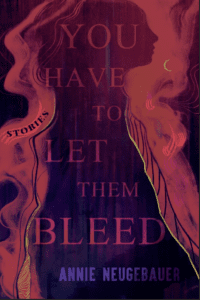
Staycation 2017
Hello out there, internet friends! I’m fresh back from my staycation, diving headfirst into a round of novel revisions and trying to get caught up on all of my business. How was the staycation, you ask? I think it all depends on what you’re comparing it to. Was it a vacation replacement? Not at all. Was it better than a normal work week? Absolutely. It was basically a week off to have fun with my husband. We tried new restaurants and bars, watched Netflix, went to a baseball game, that sort of thing. I didn’t get that Aaaaaaaah pressure release of visiting somewhere beautiful, and Texas is hot as Hell in July, but I am rested up and ready to get back to work.
Since it’s been a while since I posted a blog here on my main site, I thought I’d catch y’all up on what’s been going on that you might’ve missed. A big reason that my blogs here at home base have slowed down is because I’m busy busy posting them elsewhere! I’m writing more for my column at LitReactor – usually about twice a month. LitReactor has a cool, fun vibe and is geared towards writers AND readers. These are my latest three posts there:
- “Finding Your Perfect Summer Read(s)” → It’s not too late to track down your perfect book! This post is equal parts a theoretical breakdown and a handy guide. 🙂
- “Writers, Get Those Summer Vibes” → A cheat sheet for pretending your summer is better than it is. (Staycation, anyone?)
- “Cowboys, Natives, and Fishmen—Oh My! An Interview with Rural Fantasy Author Tex Thompson” → I had the pleasure of interviewing one of my favorite badasses. If you already know her, you don’t need convincing. If you don’t, go meet Tex!
I also continue to blog for Writer Unboxed every other month. This site is geared specifically towards writers, which is, incidentally, why I talk less about the actual craft/process of writing here than I have in the past. WU is a fantastic, supportive community for writers to talk craft, lifestyle, process, whatever. (Tip: the comments at WU are a huge part of the community and even of the content!) Here are my latest two posts there:
- “Thought Triggers: The Chekhov’s Gun of Writing Tricks” → Talking strict craft really isn’t my usual bag (not because I don’t love it, but because there’s already so gosh dang much of it out there), but once in a while I can’t resist. Don’t worry, though, I use science to back me up and plenty of poetry to wax the lesson. 😉
- “You’re Amazing and You Can Do This” → Pure lovey-dovey writer feel-good fuel.
And of course in addition to my blogging adventures, I’m still publishing stories and poems when I can! Most recently out:
- “The Fox,” Encore: Prize Poems of the NFSPS 2017 → Yay for placing first in this year’s nationals! This one is poem that shimmers on the edge of speculative—full of nature, whimsy, and longing. It’s one of my favorites, and I hope you love it too.
- “Rocking,” Texas Poetry Calendar 2018, Dos Gatos Press → This poem is a reprint from last year’s Texas Poetry Calendar. 2018 is Dos Gatos Press’s last edition, so they did an editors’ choice anthology. This one’s a quiet little love poem.
- “Pièce de Résistance,” Daunting Deviations, Digital Fiction Publishing Corp. → A short story reprint that you almost certainly missed the first time around. (The magazine it originally came out in was too expensive and hard to order.) But now it’s ebook-easy! This one’s horror with a literary edge.
Plus, can I get a heeeeell yeah for two exciting new short story acceptances? I most recently announced that “So Sings the Siren” will be appearing in the October Issue of Apex Magazine! AND that “White Paint” will be published in Cemetery Dance Magazine! (Issue TBA.) That’s two dreams come true right there. ♥♥ Both stories are literary horror – and they’re two of my best. I’m so pumped to share them with you.
While we’re looking forward to things, a quick rundown of what else is to come:
- “The Lighthouse,” Fearful Fathoms: Collected Tales of Aquatic Terror (Vol. I), Scarlet Galleon Publications, August 29, 2017 → A weird, surreal, literary horror story that I think of as vaguely reminiscent of Julio Cortázar’s “La noche boca arriba.”
- “Unravel,” HWA Poetry Showcase Volume IV, Horror Writers Association, 2017 → A very creepy free verse “love poem.” *evil laughter*
- “Light and Liquor,” Undead: A Poetry Anthology of Ghouls, Ghosts, and More, Apex Publications, 2017 → A reprint of my spoon river poem delivered by a dead coal miner.
- “Dealing in Shadows,” Suspended in Dusk 2, Grey Matter Press, January 9, 2018 → A heartfelt look at grief through the lens of speculative fiction.
Save some monies, because I’ve seen some cover previews and these are going to be GORGEOUS publications. And as always, if you ever want a recommendation or two catered towards your taste (or budget), just let me know!
As you can see, I’m as busy as ever. If you’ve been missing me here, rest assured I’m still around – just in different places. You can find me at LitReactor (my snarky side), Writer Unboxed (my sweet side), Facebook (my cat lady side), and my old standby, Twitter @AnnieNeugebauer. Or shoot me an email to say hi. 🙂
How have you all been? What has your summer held? I miss your sweet comment avatars; please fill me in on your latest below!
Share this:






